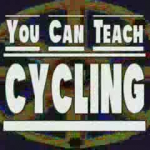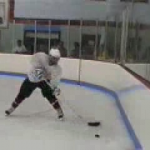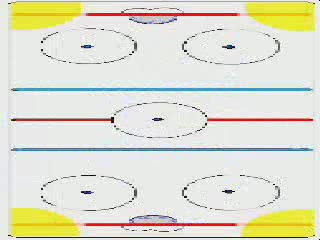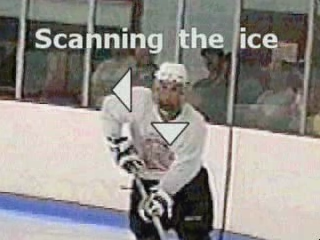Cycling can seem like a tough tactic to teach. I understand that. Still, I think with the way I approach it -- and explain it, you can teach hockey cycling as well as I can.
-- Dennis Chighisola
You Can Teach Hockey Cycling
Granted, this is a fairly advanced technique, although most older hockey players -- maybe from about the teen ages and older -- can usually learn to execute it fairly well. By now, perhaps, members have come to realize that I'm not one of those "Do this because I say so" kind of coaches. No, I want my players to totally understand the whys and the wherefores of a given tactic.
By now, perhaps, members have come to realize that I'm not one of those "Do this because I say so" kind of coaches. No, I want my players to totally understand the whys and the wherefores of a given tactic.
I've often drawn an analogy between hockey and military tactics. I've also often suggested that a military unit -- filled with real problem solvers -- can pull off a mission or save themselves, even when the chain of command breaks down.
So again, I like to educated my players well, I try to ensure they totally understand what we're trying to accomplish each step along the way, and then I trust them to make their plays work under the craziest of circumstances.
With that, I think the following video will arm the coach with a pretty good understanding of the tactic known as cycling....
http://coachchic2.s3.amazonaws.com/Cycling.flv
So, I ask you... Can you teach hockey cycling or what?
To highlight some of what you've seen in my video, though...
 A high level tactic like cycling isn't going to work all that well unless important basic skills -- like skating, puckhandling, passing and shooting -- are in place.
A high level tactic like cycling isn't going to work all that well unless important basic skills -- like skating, puckhandling, passing and shooting -- are in place.
Besides this being a pretty dangerous offensive ploy, I think the constant practicing of cycling is great for reinforcing important principles -- like puck protection, interchanging of players, offensive support and deception.
Don't forget that a lot of the effectiveness of cycling stems from utilizing certain areas of the playing surface where defenders are reluctant to immediately cover. There are at least four of these "safe areas" on the rink, although I've suggested there are six.
I believe a lot of deception -- or pretending -- is required to make enemy defenders think we're going to make one play, while we're really intending to do something else. And, it's that bit of deception that tends to freeze opponents, thereby giving us an extra split-second or so.
 Don't forget how important it is to keep the puck protected. And, by this, I highly suggest keeping it moving close to the boards -- and out of the reach of defenders -- until it's time to make a bang-bang play.
Don't forget how important it is to keep the puck protected. And, by this, I highly suggest keeping it moving close to the boards -- and out of the reach of defenders -- until it's time to make a bang-bang play.
Also, don't forget to make exchanges within one of the safe areas, until it's time to attack the net.
To be honest, I have always felt that communications by way of eye contact are at least as effective as talking to teammates. I think communicating via eye contact is especially helpful in offensive plays related to cycling and the powerplay.
Don't forget that cycling can be used at both ends of the ice.
Then, having just mentioned the powerplay, I wonder if anyone watching that video started thinking how some of those plays looked an awful lot like the plays that take place on effective powerplays. I mean, deception is a biggie in man-advantage situations, and so is the smart interchanging of players.
Lastly, just a reminder from the end of that video, in that "You can teach hockey cycling, IF... you go slowly, and keep preaching the basic concepts."
